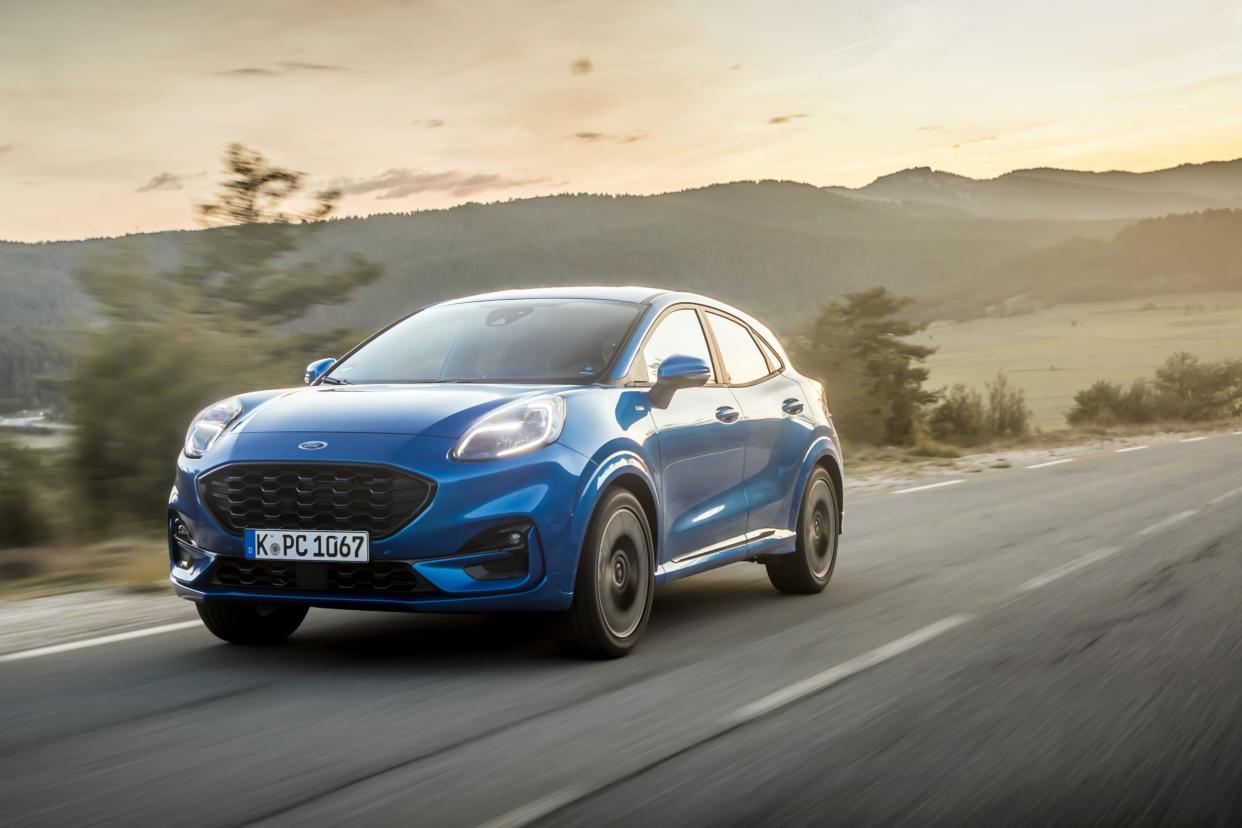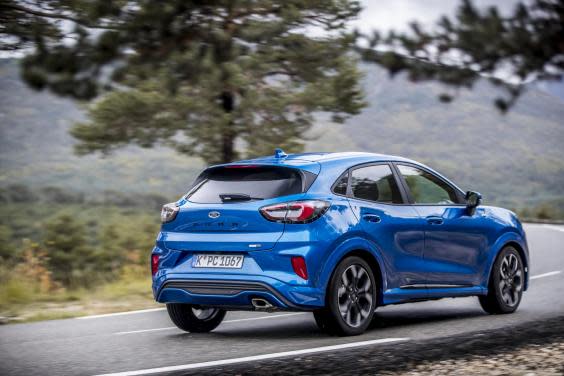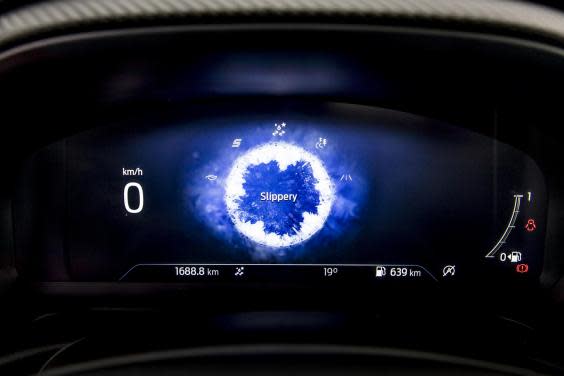Car Review: Ford Puma – fun drive that’s the cat’s whiskers

“Have you driven a Ford lately?” ran one one of the company’s most successful ad campaigns. It tapped into the idea that everyone was familiar with the brand name and the famous “blue oval” badge, and almost everyone had been in a Ford motor car one way or another since Uncle Henry pioneered modern manufacturing techniques with his Edwardian-era Model T – but had just sort of taken it for granted, and not realised how good contemporary (by then 1960s) cars could be. Anyway, it enticed some people into the showrooms.
Another half a century on, and the answer to the question “have you driven a Ford lately?” is increasingly “no”. By the early 1980s one in every three new cars sold in the UK was a Ford – Escort, Fiesta, Cortina and so on – and even a decade ago it was still a market-leading 16 per cent. Today it is hovering just above the 10 per cent mark, according to the latest industry figures (from the Society of Motor Manufacturers and Traders). Where once Ford was the dominant player on the British scene, it is now behind the combined group sales of VW (meaning VW plus Audi, Seat and Skoda) and PSA (being Peugeot, Citroen, DS and Vauxhall).

Maybe the arrival of the excellent new Puma will persuade more new car buyers to drive a Ford. By the way, it isn’t the cute little coupe you might have driven once upon a time. It’s a trendy little SUV now, and a worthy overall winner in the What Car? Car of the Year Awards, and it should pick up some more plaudits along the way. The judges praised the Puma for being fun to drive, cleverly packaged and well-priced. What Car?’s independent fuel economy tests showed it to be extremely economical in real-world driving, thanks to its mild hybrid technology
The spec
Ford Puma 1.0L EcoBoost 155PS
Price: £22,895 (range starts at £20,845)
Engine capacity: 1.0 litre petrol 3-cyl, 6-sp manual
Power output (hp@rpm): 155 @ 6,000
Top speed (mph): 134
0 to 60 (seconds): 9.0
Fuel economy (mpg): 50.0
CO2 emissions (g/km): 127
All this I can confirm. Obviously the looks won’t attract everyone. This is one of the now very many compact SUVs or crossovers that ride a little higher and have a slightly longer, wider stance than the little hatchbacks whence they are derived – in this case the Fiesta. The upside of that is that the Puma has retained most of the Fiesta’s driveability – it holds the road and rides very well, except perhaps on the most vicious of speed bumps. It isn’t quite as well resolved in shape and stance as the Fiesta, but it is pretty good, sat on its 18-inch alloys. Ford has decided to give the Puma an “optimistic grille”, and so we get that happy, babyish face that we’ll no doubt become familiar with. In size and pricing, it is if anything a kind of halfway car between the Fiesta and the Focus.
The Puma has a kinder, gentler look than the aggressive frontages favoured by the German premium makes for example, and it is currently a happier demeanour than theirs. Ford has given it some muscular haunches and a kink in the styling lines towards the back which it calls “anti-wedge”, contrasting the Puma with some of the, well, edge-shaped competitors. Otherwise it has to be said it is a bit generic from the sides and back, and could, if you’d not noticed the badge, be anything from a Hyundai to an Audi – but not easily mistaken for the wacky (and also excellent) Nissan Juke.

In fact Ford offers the Puma in two flavours – a Titanium trim with plastic cladding around the wheel arches that makes the car look more like an SUV; and the Sport line, which looks lower and meaner. A matter of taste as to which you’d choose, as it makes no great practical difference.
For the time being there’s only the one engine and gear box – a three-cylinder 1-litre petrol unit (with the choice of two power outputs) and a six-speed manual gearbox. There’ll be no electric or proper hybrid version by the look of things, but the Puma comes as a “mild hybrid”, so it has a small electric motor to supplement the petrol engine and, depending on your driving style and choice of “mode” to put the car in – eco/sport/normal/trail/slippery – you make the choice of slightly improved performance or slightly better fuel economy, or slightly enhanced traction. I’m not convinced the mild hybrid set-up with its batteries and extra motor is worth the extra weight and complexity, mind you. Diesel and automatic options will arrive later.

The Puma is in a very tough segment of the market place – as the old saying goes, mini cars make mini profits – and its pricing is reasonably keen, about £20,000 for an entry level model, up to £30,00 for the sporty ST version when that arrives. So it has to be a bit special to make its mark, and indeed it is. Ford has taken the opportunity to virtually re-invent the car boot and the Puma has a wide, deep design that incorporates a sort of second basement boot – a polypropylene “megabox” that reaches way down almost to the road. The designers say it is ideal to transport muddy sports gear or pot plants or Ikea flat packs, and they’ve even fitted the megabox with a plughole so you can flush any muck out of it.
It’s a minor miracle of packaging, as they’ve re-arranged all the other stuff to accommodate it, but you do pay the price in that a full-sized spare wheel is only an option now (you get a foam tyre-fixing kit instead – this is legal apparently). The traditional parcel shelf is also given a makeover, with a new design that pushes it right up to the rear window when the tailgate is up. Ingenious.
The Puma also has most of the tech kit buyers demand – such as cruise control and connectivity with smartphones – but an upgrade is already planned for next year that will see the even more advanced technology currently on the Focus being offered on the Puma. Overall, it is a fine offering, one of their best in years, and, apart from the odd bit of low-rent trim, it will change your perceptions about the firm. So, yes, if you haven’t drive a Ford lately, you really ought to drive a Puma.

 Yahoo News
Yahoo News 
